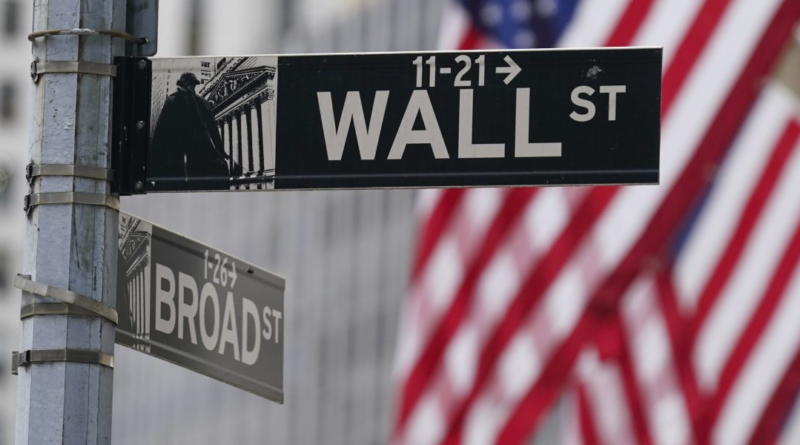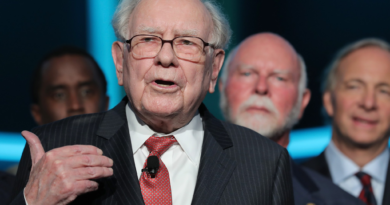Wall Street claws back some of the week's losses with Big Tech leading the way
Wall Street is clawing back some of its losses from earlier in the week as pressure eases from the bond market Thursday.
The S&P 500 was 0.3% higher in afternoon trading, coming off a back-to-back loss. The Dow Jones Industrial Average rose 14 points, or less than 0.1%, as of 1:51 p.m. Eastern time, and the Nasdaq composite was 0.8% higher.
Big Tech stocks were helping to lead the way, including a 2.9% climb for Apple. Fastenal jumped 5.9% for the biggest gain in the S&P 500 after the distributor of safety supplies, fasteners and other products reported a bigger quarterly profit than analysts expected. They helped offset a warning from Humana about how higher costs would eat into its profit. The insurer tumbled 10.2%.
Stocks were broadly steadier as Treasury yields in the bond market slowed their jump from earlier in the week. Yields had been climbing as traders pushed back their forecasts for how soon the Federal Reserve will begin cutting interest rates. Higher yields in turn undercut prices for stocks and raise the pressure on the economy.
The Fed has indicated it will likely cut rates several times in 2024 because inflation has been cooling since its peak two summers ago, meaning it may not need as tight a leash on the economy and financial system. But critics said Wall Street’s expectations went overboard in how many cuts the Fed would deliver this year and how soon it would begin. That in turn may have sent stock prices too high and Treasury yields too low since their big moves began last autumn.
The yield on the 10-year Treasury rose to 4.14% from 4.11% late Wednesday. It had begun the week at 3.95%.
The yield on the two-year Treasury, which moves more on expectations for Fed action, eased to 4.33% from 4.36%. But even there was hesitation.
Treasury yields swung up and down in the minutes after a report on Thursday morning showed the number of U.S. workers applying for unemployment benefits fell last week to its lowest level since two Septembers ago. That’s good news for workers and for the economy overall, which has so far powered through predictions for a recession.
But a stronger-than-expected job market could also keep upward pressure on inflation. That would lessen the chances of the Federal Reserve cutting rates as soon as its March meeting. Traders are now betting on a roughly 57% chance of that, down from more than 70% a week ago, according to data from CME Group.
“The story this week continues to be robust economic data, and how it may keep rate cuts on ice for a while,” said Chris Larkin, managing director, trading and investing, at E-Trade from Morgan Stanley.
Other reports on the economy were mixed Thursday. One showed manufacturing in the mid-Atlantic region is contracting by more than economists expected. Another said homebuilders broke ground on more projects last month than economists expected, even if it was weaker than November’s level.
Stocks of homebuilders were mixed following the report, including a 0.3% slip for D.R. Horton and 3.7% climb for Beazer Homes.
On the losing end of Wall Street were several financial companies that reported weaker results for the end of 2023 than analysts expected. Discover Financial Services fell 10.3%, and KeyCorp lost 5.7%.
In stock markets abroad, indexes rose across much of Europe and Asia to trim their losses for the week so far.
___
AP Business Writers Yuri Kageyama and Matt Ott contributed.




